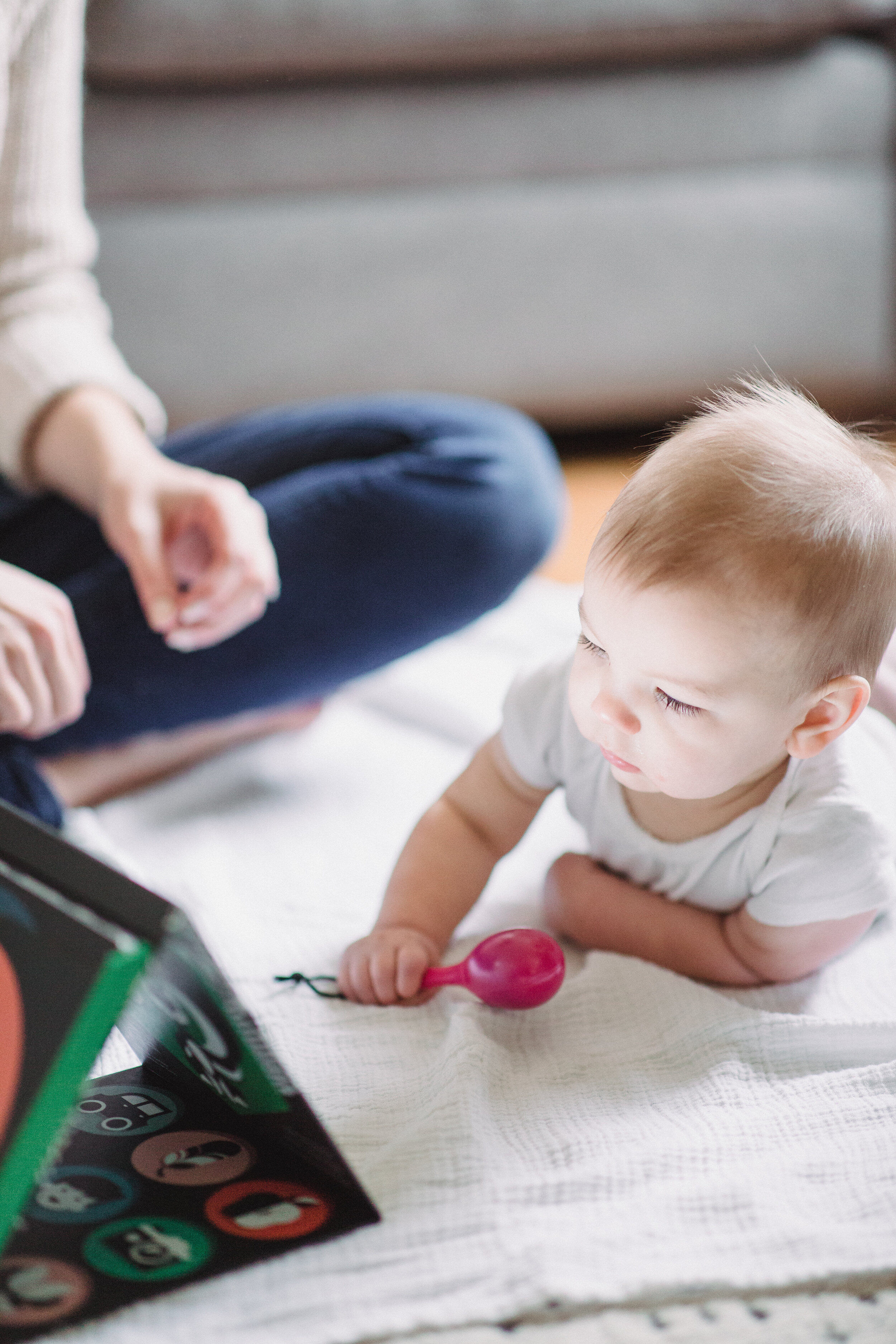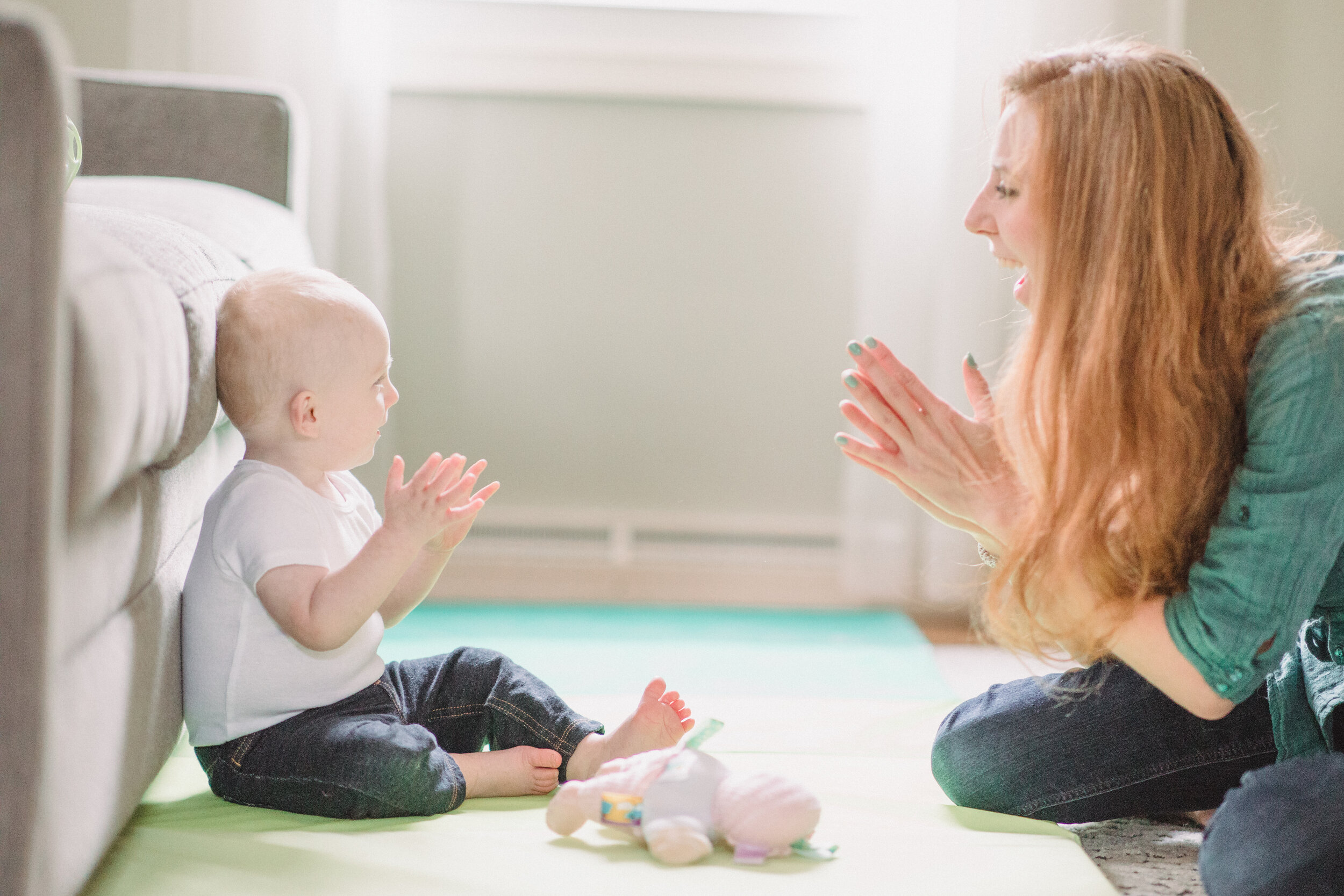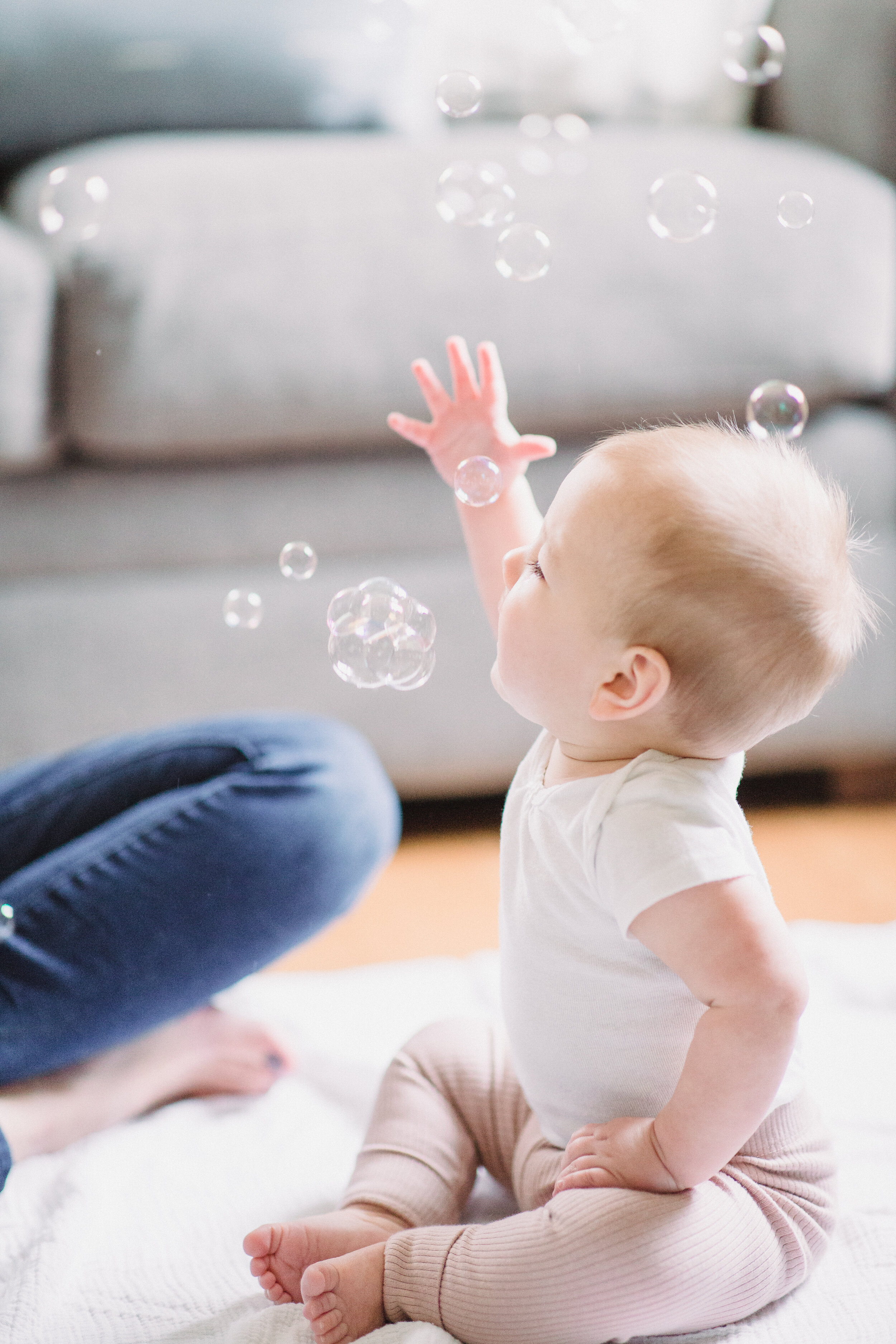The Floor Builds the Core™
Babies learn how to move by moving. It’s as simple as that!
"The Floor Builds the Core™" is the concept that a baby gets stronger and masters motor skills by learning how to move in and out of positions while they’re on the floor. Science supports that unrestricted natural floor play gives a baby's body the most opportunities to try out and master new motor skills.
The core is the foundation or base of all movement in the body. While a baby is on the floor, they are building up the core muscles in their back, belly and neck. Making sure those muscles are good and strong ensures that the movements of the arms, legs, hands, feet, and mouth will all have a good solid foundation to build off of in the future.
In this article you’ll find
Why Floor Play is so Important
How Experience Drives More Movement
The Science Behind Movement
Baby Containers - Why to Avoid Them
Video tutorials to support every stage of development (click for link)
Why Floor Play is so Important
The more time a baby spends on the floor, in an unrestricted position, the more opportunities their little nervous, muscular, and sensory systems have to strengthen, learn, refine, and perfect movements to make them more coordinated. In fact, a study found that the amount of time a baby spends playing on their belly has significant impacts on how quickly they achieve more complicated motor skills like rolling, crawling and sitting. (Kuo et al 2008).
Floor play allows baby to truly practice the often overlooked transitional movements of getting in and out of sitting, reaching for toys without falling over and coordinating all of their limbs to crawl, etc. The floor provides baby the least restrictive space to continue to try new motor patterns and to build on them. This practice leads to mastery of a skill (meeting a milestone) and allows baby to then build even more complicated movements on top of it (move on to the next milestone). It’s also the easiest place to put baby, so let’s call that a parenting win!
Experience drives more movement
Babies learn as they move through and experience the world. The nerdy term for this concept is “motor learning,” which is the process of practicing, perfecting, and repeating skills so many times that they become automatic. It is an active process - the baby has to participate in the movement, not be placed in or moved through the movement passively. The experience of successfully mastering a skill drives the baby to want to do it again and again.
Example: Think about bringing a cup of coffee to your mouth, you don’t have to think about how to position your hand, how hard to grasp the cup, how to bring it to your mouth, drink, or swallow. You’ve done this so many times that it has become automatic. Babies are learning, trying, and perfecting motor skills like rolling, crawling, reaching, babbling, playing, feeding, and exploring through repetition all day long.
“Experience facilitates improvements in motor behavior and infants accumulate immense amounts of experience with all of their basic action systems.” (Adolph & Franchak, 2017).
The science behind Movement
A study by the Developing Child states, “In the first few years of life, more than 1 million new neural connections form every second” (Brain Architecture, 2019). As a baby practices motor skills, they keep the connections that worked well, and prune off the rest. In the words of my mentor, Kaci Hertz, “The neurons that fire together, wire together” (2016). So as baby repeats the actions that worked, to sit up, and also prunes out the mistakes. The next time baby tries to sit, the motor pattern is easier to repeat and more efficient. That is how the brain builds the architecture of learning new movements. This is motor learning.
Baby Containers
Baby containers are any piece of equipment that holds baby in a position. Examples: bouncer, Bumbo, exersauser… They’re more practical for parents’ use than they are for baby’s development. For more info check our other articles here.
*Please hear us - No mom guilt or parent shaming here! There are definitely times to use containers sparingly to get things done, for practical reasons, and potentially for medical reasons. We just want to educate parents on the benefits of floor play for baby's motor development. Try to limit container time to less than 20 min at a time and avoid moving baby from one container to another.
What to do
Since motor learning is active, baby-driven, and experience-based, all you have to do is join your baby on the floor while they play. Make sure baby has lots of play time on the floor even after the newborn push for "tummy time." Try getting on the floor with baby to read a book, roll a ball, stack blocks, shake rattles, blow raspberries, play beek-a-boo….. Entice baby to pivot on their belly or crawl toward you. Encourage baby to stand up and play while they hold on to the furniture or a wall.
Want all of my simple play ideas in one spot? Want to jump from rolling to sitting, to first steps without thinking about it? I’ve got you covered in the Caregiver Academy with TONS of simple play ideas and positions to support your baby’s development from tummy time through first steps!
Summary
Learning new movements happens through repetition and practice. Movement originates in the core muscles of the body and is least restricted when baby is allowed to play on the floor.
Get your baby on the floor throughout the day to help them learn how to move. If you have questions about HOW TO TEACH your baby to get to the next big milestone, simply search a keyword here (like “crawl,” or “roll”) to see lots of play ideas that promote motor development using The Floor Builds the Core™ approach. Be sure to head to our Instagram or Facebook accounts for lots of posts full of floor play ideas to support development. You can also search your baby’s next milestone (sitting, crawling) for more posts here on the blog.
We’re always happy to answer questions and help however we can so leave us a comment here or email us.
-Bree
Related posts: Floor Play Ideas of Every Stage of Development
We’re Jaclyn & Bree
Pediatric therapists and moms with a mission to empower you with knowledge to encourage your baby’s development and continue confidently into your parenthood journey.
If you have any questions, please feel free to leave a comment below and we will get back to you. As always, the information we share is meant to provide general education and tips and is not intended as medical advice. If you have a specific question or concern about your child’s development, please speak directly to your child’s doctor or therapist.
References
Adolph, K., & Franchak, J. (2017, January). The development of motor behavior. Retrieved June 24, 2020, from https://www.ncbi.nlm.nih.gov/pmc/articles/PMC5182199/
Brain Architecture. (2019, August 20). Retrieved June 24, 2020, from https://developingchild.harvard.edu/science/key-concepts/brain-architecture/
Dewar, G. (2019). Motor milestones: How do babies develop during the first two years? Retrieved June 24, 2020, from https://www.parentingscience.com/motor-milestones.html
Hertz, K. (2016). NDT/Bobath Certificate Course in the Management and Treatment of Children with Cerebral Palsy and other Neuromotor Disorders. In Neuronal Group Selection Theory (pp. 10-18). Chicago, IL: City Kids.
Kuo YL, Liao HF, Chen PC, Hsieh WS, Hwang AW. 2008. The influence of wakeful prone positioning on motor development during the early life. J Dev Behav Pediatr. 29(5):367-76.







